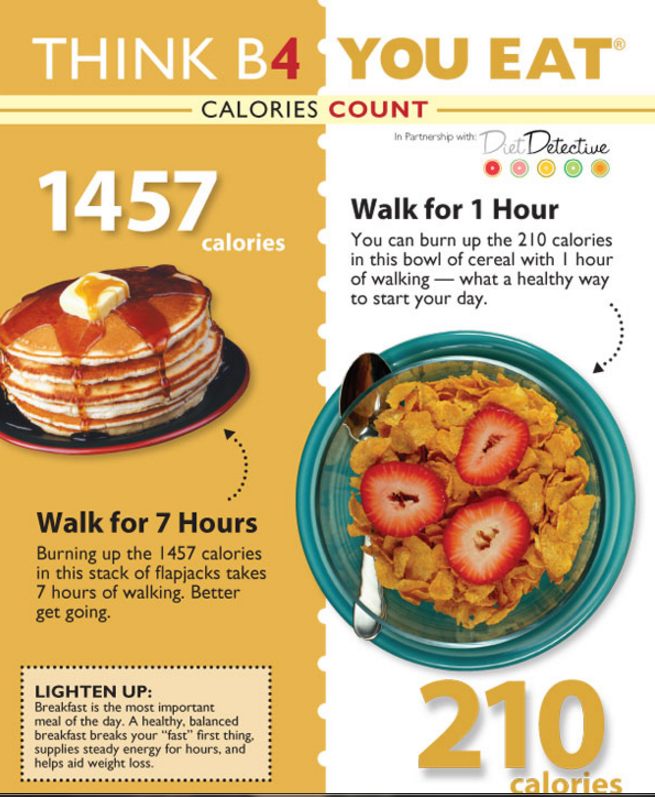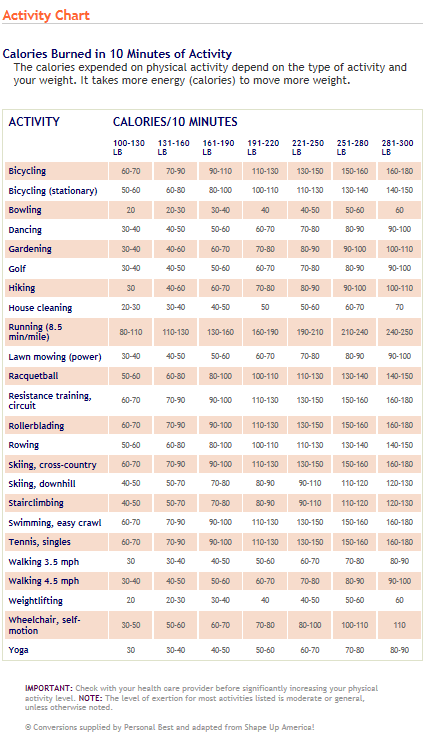



 People often abandon their workouts when the results — getting stronger or slimmer — begin to dwindle. In most cases, reaching a plateau simply means you’re progressing toward fitness and ready for a new level of workout.
People often abandon their workouts when the results — getting stronger or slimmer — begin to dwindle. In most cases, reaching a plateau simply means you’re progressing toward fitness and ready for a new level of workout.If you’re stuck on a plateau, fitness specialists recommend enhancing your routine 4 ways using the FITT principles — Frequency, Intensity, Time and Type. This strategy can be adopted for cardio exercise and resistance training.
FREQUENCY — how often: Increase the number of your workouts or exercise days. Example: From 4 days to 6 days per week.
INTENSITY — how hard: Increase the difficulty or level at which you exercise. Example: Increase heart rate maximum from 65% to 90% (following the proper exercise heart rate range for your age).
TIME — how long: Increase your minutes per workout. Get a minimum of 150 minutes per week.
TYPE — activity: Change the type of activity (e.g., replace 2 cardio workouts with strength-training or walking outdoors).
The FREQUENCY and TIME of your workouts will be subject to your schedule. But the INTENSITY and TYPEof exercise are only limited by your fitness level and activity preferences.
You can enhance the benefits of cardio exercise (swimming, hiking, etc.) through speed, incline and distance, or by combining activities. Strength-training intensity can be adjusted with changes in weight resistance, number of reps and sets, and more.
Variety is the key to your continued fitness improvement. Every few months, change 1 or more elements of FITT. Take pleasure in performing new moves in new ways. Check with your health care provider for more personalized guidance.
http://www.personalbest.com/PersonalBestHealthlines/ViewArticle.aspx?article=5421

Have you tried digital fasting? That’s when you purposely turn off electronic devices from anywhere from a few hours to several days. The point is to disconnect from the artificial world of social media, electronic communication, the internet and TV – and reconnect with the world around you and your own inner voice and thoughts. Unplugging for a day or more may benefit you in these ways:
Improved posture. You will sit and stand up straighter, rather than hunched over a device, becoming cranky, stiff and achy.
More personal connections. You will make more eye contact with people and appear more friendly and approachable. You may lose that sense of loneliness and disconnect from spending hours and days attached to your devices.
Better conversation and collaboration. Instead of turning to your device for every answer and suggestion, you may enjoy more meaningful conversations, ask more questions and come to more shared solutions.
Fantastic focus. Without the distraction of mobile devices, you may find yourself more alert and observant and able to remember details.
Improved sleep. The blue light emitted by some electronic devices, such as phones and tablets has been proven to disrupt sleep patterns. You might not sleep longer after you unplug, but you could improve sleep quality and feel more rested.
“Our greatest weakness lies in giving up. The most certain way to succeed is always to try just one more time.” Thomas Edison
Personal Best Special Topic

 Keeping your LDL (bad) cholesterol low is primary to heart health. One part of controlling LDL is boosting your HDL (good) cholesterol, especially if you’re at risk for heart attack or stroke.
Keeping your LDL (bad) cholesterol low is primary to heart health. One part of controlling LDL is boosting your HDL (good) cholesterol, especially if you’re at risk for heart attack or stroke.
Basic good health is key to better HDL. Adopting positive lifestyle habits can also help lower LDL cholesterol and lead to other healthful effects. The top recommendations:
1. Get active. Moderate- to vigorous-intensity exercise is best for boosting HDL. Aim for 150 minutes per week of exercise, preferably activity that raises your heart rate. Note: Get your health care provider’s approval before significantly changing your exercise routine.
2. Lose excess weight. Losing 5% to 10% of your current weight can raise HDL, along with reducing blood pressure and blood sugar.
 3. Avoid trans fats. Some manufacturers have eliminated trans fats, but they remain in some baked goods, fried foods and crackers — so check Nutrition Facts panels. Removing trans fats from your diet can improve HDL and LDL levels. Choose better fats found in nuts, olive oil and avocados instead.
3. Avoid trans fats. Some manufacturers have eliminated trans fats, but they remain in some baked goods, fried foods and crackers — so check Nutrition Facts panels. Removing trans fats from your diet can improve HDL and LDL levels. Choose better fats found in nuts, olive oil and avocados instead.
4. Reduce refined carbohydrates. Switch to whole grains, such as oats, quinoa and brown rice, instead of white flour and white rice. Eat less sugar from baked goods, candy and ice cream.

5. Limit sugary and highly processed foods; replace with fruits, vegetables and protein low in saturated fat.
6. Stop smoking. Smoking lowers your HDL and raises your LDL.
SCREENING: Have your health care provider determine any HDL or LDL risks and the best approach to improving your numbers. In some cases, statin medicine may be beneficial.
 Our digital tools help us work, learn and connect faster. With the advent of smartphones and tablets, time spent using mobile devices has increased 70% in the U.S. since 2012.
Our digital tools help us work, learn and connect faster. With the advent of smartphones and tablets, time spent using mobile devices has increased 70% in the U.S. since 2012.
More than two-thirds of teens own smartphones and a third own tablets. And many adults are also relying more and more on their mobile devices for work, social media and web-based entertainment.
However, too much time spent online with any device can lead to what the American Psychiatric Association calls Internet Use Disorder. Signs include using the internet to escape responsibilities; spending more time online; discontinuing other interests; and trying unsuccessfully to reduce or stop online usage.
Researchers are learning more about the mental effects of heavy technology use — teens and adults alike can develop mental health problems including sleep disorders, depression and stress.
Is it time to downsize your daily cyberspace quota? Try this:
✒Use an app that monitors phone and, yes, app usage.
✒List things you’ll do when you unplug.
✒Set boundaries for plugged-in time for you and your kids.
✒Identify networking activities to omit.
 ✒Unplug to enjoy other pastimes.
✒Unplug to enjoy other pastimes.
✒Exercise — every hour of screen time means time spent sitting.
✒Post away messages so everyone knows your response schedule.
Digital tools are designed to make life easier, not to dominate it.
http://www.personalbest.com/PersonalBestHealthlines/ViewArticle.aspx?article=4937
Best Bites
 You can’t beat spring and summer for the best variety and quality of vegetables — whether from local supermarkets, farmers markets or your own backyard. Here are some ways to enjoy this fresh bounty.
You can’t beat spring and summer for the best variety and quality of vegetables — whether from local supermarkets, farmers markets or your own backyard. Here are some ways to enjoy this fresh bounty.
Roast ‘em. Mushrooms, asparagus and sweet onion team up well. Place vegetables in a roasting pan and sprinkle with walnut or olive oil and garlic powder; lightly salt and pepper. Cook hot and fast, about 410°F for 8 to 12 minutes, depending on thickness of vegetables. Don’t overcook. Roasting brings out the maximum flavors of vegetables.
Grill ‘em. Cut vegetables into thick strips or chunks. Best choices: whole mushrooms, halved tomato, onion, chunks of zucchini and squash. Place a sheet of heavy foil brushed lightly with olive oil on your grill. Arrange vegetables on the foil and cook until tender — easy cleanup.
Stuff ‘em. Wrap thinly sliced vegetables, such as cucumber, tomatoes, pepper and green onion, in a tortilla; top with plain Greek yogurt and salsa. Or stuff partially cooked, whole bell pepper shells with a mixture of cooked brown rice, minced onion and mushroom, and pine nuts. Heat in the oven, then serve warm.
Toss a pasta salad. Slice cooked green beans, potatoes and carrots and stir together with grape tomatoes and cooked whole-wheat pasta. Dressing: Whisk fresh chopped herbs, lemon juice, Dijon mustard, garlic and hot pepper flakes with olive oil or create your own fresh approach.
http://www.personalbest.com/extras/16V5tools/View-Article.aspx?article=4716

http://www.personalbest.com/extras/16V5tools/Calorie-Chart.aspx?issue=877